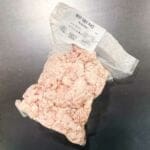Tallow
Up until the food revolution that started in the mid-1900’s tallow and lard were commonplace. There seems to be a resurgence of interest in tallow and lard - rendered suet from beef and pork - which is perpendicular to what government “experts” and many health care professionals have suggested in the past few decades.
Equipment
- 4 quart Pot or Dutch Oven
- Mason Jars and Lids
- Canning Funnel
- Cheesecloth
- Stainless Steel Ladle
Ingredients
- 2 lbs Nebraska Star Beef® Small Batch Kidney Fat
- 1 cup Water
Instructions
- Place the Dutch Oven or pot on low-medium heat. Set to 3 if knob offers 1-10 setting, or the approximate equivalent.
- Add 1 cup water and about 2 cups suet and wait. The water will help to transfer the heat to the suet and it will begin to melt, the water will cook off and the suet will begin to render (melt). As the initial two cups melt, continue to add suet slowly. As the suet renders, it will form “cracklins” which are simply collagen and tissue that is in the fat. These should be removed when they are golden brown, placed on a paper towel, salted and enjoyed as a snack. Bring the rendered suet up to 250° F or so, hotter is okay, but don’t get carried away, ideally avoid heating it to the point that it smokes.
- Fold a piece of cheese cloth in half twice, make sure it is large enough to fit inside your canning funnel without falling through. Place the funnel in a sanitized mason jar and ladle the tallow in through the cheesecloth lined funnel. The cheesecloth will catch any of the cracklins that are too small to get otherwise. If some make it through into the tallow, they won’t hurt anything besides the appearance. When jars are sufficiently filled, place the cap and sealing ring on the jar and allow them to seal.
- When the rendered tallow has been ladled to a low enough level, add more suet and repeat the process. The remaining tallow can be poured from the pot into the last jar, but make sure to ladle as much as possible so the pot is light enough to handle safely.
- DO NOT allow water or any other item with water to contact the hot tallow, as it will splatter and this can cause burns.
